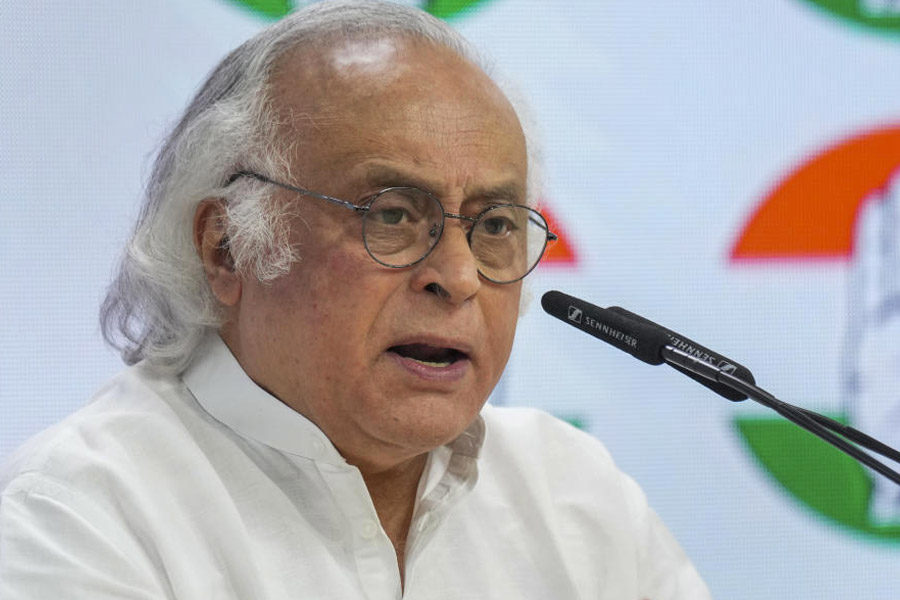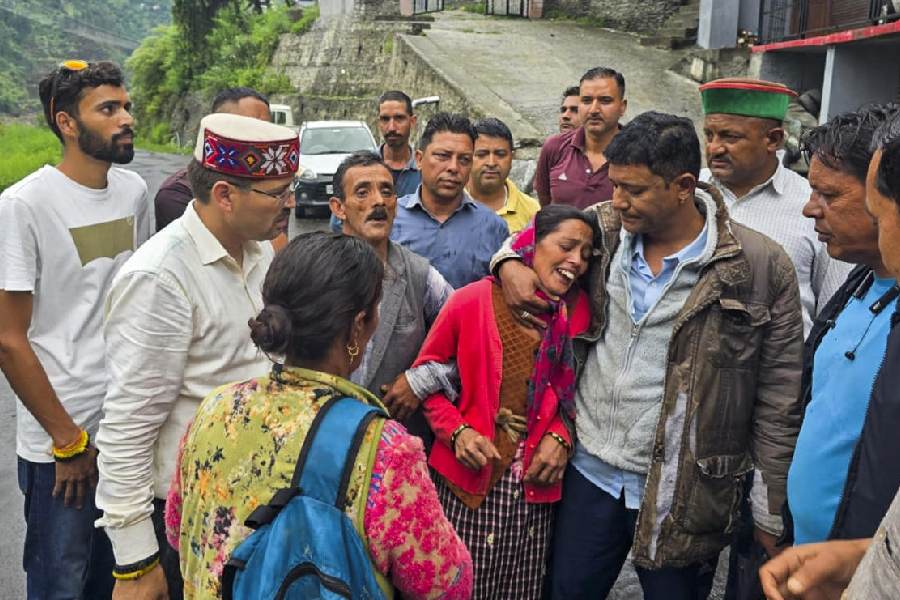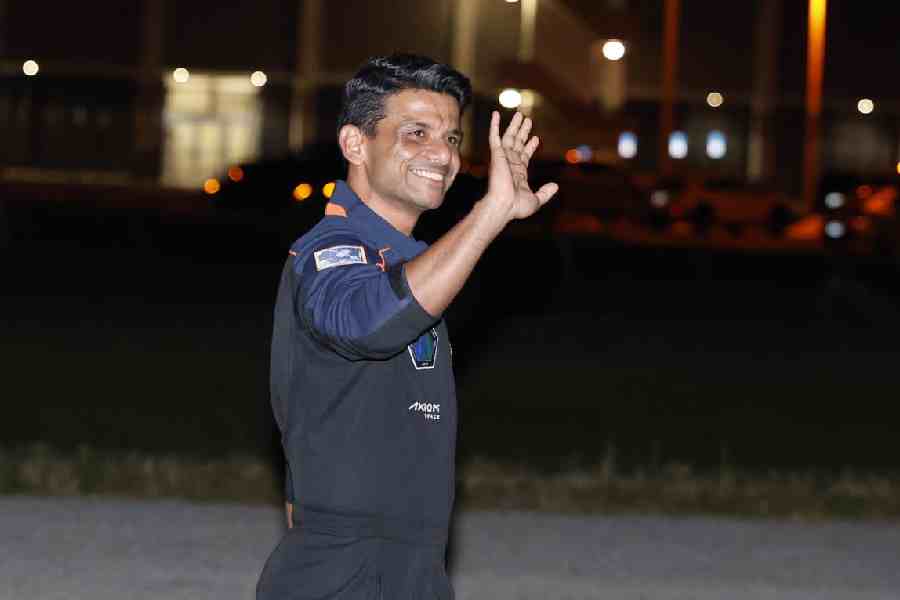In an action reminiscent of an ancient rivalry, certain Hindu groups have protested against the construction of a Jain prayer hall at the holy site of Badrinath. So vehement has been their opposition that they have even threatened to use force to drive the Jains out of the area. In defence of their action, these zealots have argued that the Jains are not Hindus since they venerate their tirthankaras and oppose rituals, which are the lifeline of sanatani Hinduism and the means of livelihood of its priests.
According to press reports, the sadhus are envious of the wealth of the Jain community and the high renunciatory capacity of Jain monks who journey on foot, never touch money, nor store or cook food, all of which make them anathema to their Hindu counterparts.
Critics of Hinduism would regard this as one more instance of the religion's allegedly growing intolerance of other faiths. In the wake of contests with Muslim and Christian activists, this episode is bound to revive controversy over Hinduism's supposedly hegemonic agenda. A deeper reading of history, however, presents a distinctly less alarmist explanation of this apparent Hindu-Jain face-off. The rivalry between the Brahmin ritualist and the renouncer has in fact, been inherent in the Indic tradition from the very outset, with the sanyasi consistently scoring over the priest in terms of both social status and prestige.
One of the paradoxes of the Indic situation was that though the sanyasi had renounced the world, in reality it was he who dominated the society, rather than the Brahmin householder-ritualist. As Louis Dumont pointed out several decades ago, the sanyasi was the real agent of change and development in Indian religion and spirituality. He was an innovator, the creator of values, unlike the Brahmin who mainly preserved, aggregated and combined.
The Brahmin householder-ritualist was defined and limited by his social existence and the constraints of the caste system, whereas the sanyasi had freed himself of societal roles and obligations to concentrate instead on universal and personal goals. The value systems he created were so powerful and all-pervading that they influenced and reshaped the brahminical householder tradition.
So overwhelming was the persona of the sanyasi that key features of the world-negation of the renouncer became integral to the world-affirming view of the Brahmin householder as well. So much so that the 'good' Brahmin finally became one who was the splitting image of the world-renouncer.
The overlap was so complete that there was little difference left between the ideal Brahmin and the ideal renouncer, except one of degree. Like the renouncer, the Brahmin made it incumbent upon himself to control his senses, cultivate abstinence and detachment, and practice non-violence. Renunciation even became the final, liberating phase in the four-fold stages of the life of a householder.
The total identification of the Brahmin with the renunciation ideal had other equally significant consequences. Brahmins who functioned as priests and thereby performed their castes' most characteristic professional activity, lost status. They were considered demeaned and degraded by their caste men.
Acceptance of gifts was widely believed to lower the prestige of Brahmins for it meant that the evils (paap) of the king-patron were thereby transferred to the receiver. Brahmins who presided over life-cycle ceremonies, specially funeral rites, were considered so tarnished that they were known as 'untouchable' Brahmins. Only those Brahmins inspired respect who were not dependent on the patronage of jajmans and who cultivated the image of learned ascetics.
What bears mention in the present context is that Jainism was among the earliest of the ascetic traditions in the subcontinent. The practice of asceticism in fact reached its acme in the Jain religion, and Jain monks were throughout renowned for the rigours of their asceticism. The acute physical hardships they continually subjected themselves to aroused the deepest awe in the wider society.
However, it may be noted that the contrast was not between them and Brahmins as a caste, since several Jain monks were themselves Brahmins. Rather, it was a debate between the man-in-the-world concept and that of the renouncer.
The seemingly wide divergence between Jain monks and Brahmin householders created an impression in some quarters that Jainism was a movement outside and opposed to the Vedic tradition. This was reinforced by Jainism's apparent refusal to accept the finality of the Veda s, a trait they shared with the Buddhists, the Carvakas and several other groups categorized as nastikas (non-believers in the Veda s).
In actual fact, however, Jainism was not a rejection of the Vedic path. Jain cosmology saw itself as a movement beyond this path when the Hindu accumulation of merit and demerit had been exhausted. Impartial scholars have conceded that all Indic religions present a socio-religious continuum that defies textual labels and categories.
Other scholars have argued that the concepts of asceticism and renunciation were implicit in classical Hindu thought and did not enter the Brahminical tradition from outside. The Rig Veda Samhita mentions long-haired ascetics (kesins) and silent ones (munis) who either moved around naked ('clothed in wind') or dressed in red rags.
This, of course, is not to say that the renouncer tradition was a direct follow-up of theRig Vedic ascetic culture. Rather, it is to say that the theory of renunciation as it eventually developed in the Upanishads. Jainism and Buddhism rested on a shared heritage of asceticism as practised by renouncers with varying affiliations, since at least the Rig Vedic times. It is not without significance that the Upanishads, Buddhism and Jainism all arrived almost simultaneously on the Indian scene, and were all associated with forests, the warrior class and the internalization of ritual.
In view of the present rigidity of Hindu monks at Badrinath, it would be in order to point out that Hindu, Buddhist and Jain religious structures have historically always existed side by side, throughout the length and breadth of the land. The Ajanta and Ellora caves are the most famous, but by no means the sole, instance of this Indic truth.
The fact that the news report in question mentions the intense longing of the Jains to visit Badrinath is adequate testimony to the shared sacred geography and unity of spiritual culture. In contemporary times, too, Jains have been intimately linked with Hinduism. They have been in the forefront of the Hindutva movement, providing invaluable intellectual resources and physical support. Those intent upon ousting them from Badrinath are needlessly creating fissures within the wider Hindu family at a time when this family is under severe stress from monotheistic creeds.
 Thursday, 26 June 2025
Thursday, 26 June 2025










